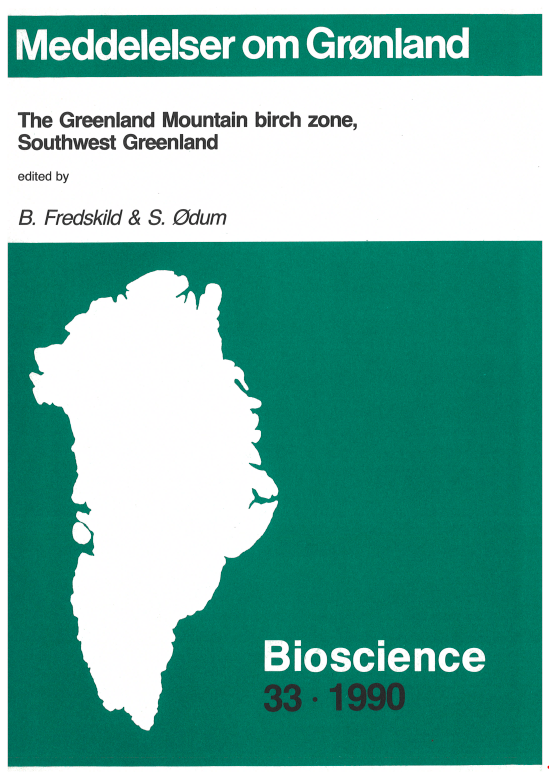Hybridization, introgression and taxonomy of the Mountain birch in SW Greenland compared with related results from Iceland and Finnish Lapland
DOI:
https://doi.org/10.7146/mogbiosci.v33.142413Abstract
Samples from birch populations were collected in Qingua-dalen and Narssarssuaq during the excursion of SBP (the Subarctic Birch Project) to SW Greenland 1984. In Qingua-dalen, where the environmental conditions are more favourable, the stems of the Mountain birch (Betula pubescens ssp. tortuosa) are taller and thicker and the leaf size is larger than in populations at Narssarssuaq. Intermediate forms – probably introgressions - between B. pubescens and B. glandulosa were found in both populations.
According to cytological investigations of Qingua-dalen populations, the putative hybrids between B. glandulosa (2n = 28) and B. pubescens (2n = 56) were found to be triploids (2n = 42). Seeds collected from hybrids did not germinate but the germination of the Mountain birch was also extremely low in 1984. In the same year, B. glandulosa produced abundantly seeds with high germination percentage. Germination experiments with seeds collected in 1982 and 1985 indicated that under climatically favourable conditions Mountain birch produces viable seeds. Reproduction through vegetative means was found to be strong in all birch taxa.
Considerable differences have been found between the provenances of birches from SW Greenland and Finland in cultivation experiments carried out since 1976 in South and North Finland. The clones of B. pubescens and B. glandulosa, originating from Kangerdluarssuk , mature very late in autumn and the shoots above snow level were badly frostdamaged during the winter. This was particularly noticeable for B.
pubescens in test fields in Lapland. The plants have survived, however, by means of re-suckering and started flowering at an early stage producing viable seeds. Probably no reproductive barriers between birches of the two geographically isolated areas, SW Greenland and Finland, have developed.

Downloads
Published
Issue
Section
License
Coypyright by the authors and the Commision for Scientific Research in Greenland / Danish Polar Center/Museum Tusculanum Press as indicated in the individual volumes. No parts of the publications may be reproduced in any form without the written permission by the copyright owners.

